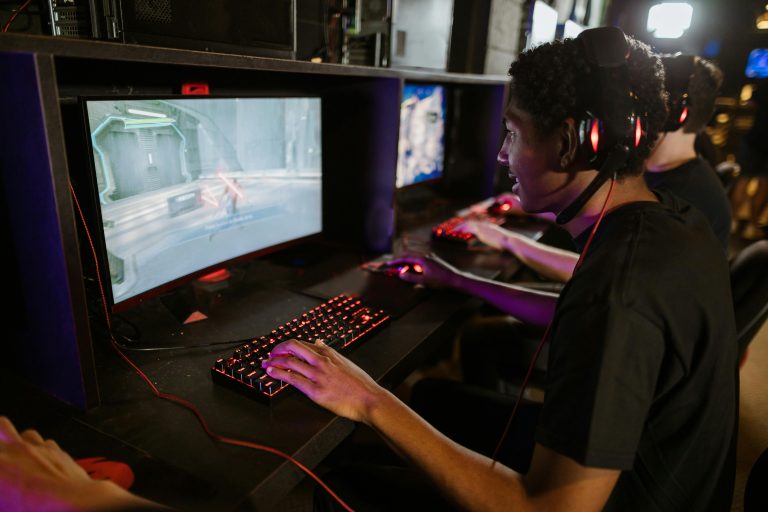
For decades, horror games have relied on carefully crafted scripts to deliver their scares. We’ve all learned the rules: the monster always appears after you pick up the key, the safe room is always safe, and you can often outsmart the enemy by memorizing its patrol route. But what if the game itself could learn? What if the very environment and the creatures within it could adapt to your deepest fears and playstyle? This is no longer a distant nightmare; it’s the new reality being ushered in by artificial intelligence. AI is poised to dismantle the predictable frameworks of traditional horror gaming, creating experiences that are profoundly personal, unpredictable, and terrifying. By moving beyond pre-scripted events, AI can generate a unique form of dread that lingers long after you’ve put down the controller. Let’s examine three groundbreaking case studies that prove AI is not just a tool for horror games—it’s becoming the monster itself.
Case Study 1: Hello Neighbor’s Adaptive Antagonist
The core premise of Hello Neighbor is simple: break into your creepy neighbor’s house to discover the secret he’s hiding in the basement. The revolutionary twist was the neighbor’s AI. Instead of following a set path, the Neighbor’s AI was designed to learn from the player’s actions. If you consistently used a specific window to break in, the Neighbor would begin to barricade it or place a bear trap nearby. If you favored a particular hiding spot, he would check there first on subsequent playthroughs.
This implementation of AI fundamentally changes the player’s relationship with the enemy. The Neighbor isn’t just an obstacle; he becomes a reactive, intelligent force. The fear shifts from simple jump scares to a pervasive paranoia. You start to second-guess every strategy, wondering if the game is deliberately countering you. This creates a uniquely personal horror experience where the enemy feels less like a programmed entity and more like a genuine, malevolent opponent. The terror stems from the realization that you are being studied and outsmarted, making the environment itself feel hostile and unpredictable.
Case Study 2: Alien: Isolation’s Perfect Organism
Perhaps the most celebrated example of AI in horror gaming is Creative Assembly’s Alien: Isolation. The team set out to create an alien that was not just a scripted enemy but a truly persistent and intelligent hunter. They developed a groundbreaking two-AI system: one that controlled the Alien’s moment-to-moment movements and another, a “Director AI,” that managed the overall tension and pacing.
The Alien itself operates with a complex set of senses—sight, sound, and smell—and explores the environment dynamically. It doesn’t have a predefined route; it searches, investigates, and hunts. The Director AI works in the background, subtly guiding the Alien toward the player’s general area to maintain pressure but never directly controlling it. This means the Alien can suddenly drop out of a vent right in front of you, or it might spend minutes searching another part of the station, leaving you in a state of agonizing suspense.
The genius of this system is that it makes the Alien feel authentically alive and unpredictable. You can’t learn a pattern because there isn’t one. The only consistent strategy is to hide, stay quiet, and pray. This captures the essence of the original film’s horror—the feeling of being stalked by a perfect, unkillable organism. The AI is the star of the show, responsible for countless stories of emergent, heart-stopping encounters that are different for every player.
Case Study 3: The Generative Horrors of AI-Driven Gameplay
While the previous cases focus on enemy behavior, the next frontier is using AI to generate the horror itself. Imagine a game where the environments, the story beats, and even the monsters are partially generated on the fly, tailored to the player. This isn’t just theoretical.
Prototypes and research projects are already exploring this space. For instance, an experimental game could use AI to analyze a player’s physiological responses via a heart-rate monitor. If the system detects a player’s heart rate is steady during a certain type of enemy encounter, it might shift tactics, introducing a new, more frightening enemy type or altering the environment to induce more anxiety. Another concept involves AI that dynamically generates audio cues or visual hallucinations based on player actions, creating a descent into madness that is unique to each playthrough.
This represents the ultimate personalization of fear. The game is no longer a static story but a dynamic nightmare that evolves to exploit your specific vulnerabilities. It could emphasize psychological horror for one player and relentless visceral terror for another. This level of adaptive, generative horror promises to break the final barrier between the game and the player, creating an experience that feels as though it is not just trying to scare you, but truly knows what you are afraid of.
The Future of Fear is Adaptive
The integration of AI into horror games marks a paradigm shift. We are moving away from a one-size-fits-all approach to horror and towards a future of personalized, adaptive terror. The case studies of Hello Neighbor, Alien: Isolation, and emerging generative AI prototypes demonstrate the incredible potential. AI empowers developers to create enemies that feel intelligent, environments that feel reactive, and narratives that feel uniquely tailored to the individual.
The ultimate horror is the loss of control and the unknown. By its very nature, AI introduces both. It creates worlds where you can never be truly safe, because the rules can change. You can’t memorize a walkthrough for a game that is learning from you. The monster isn’t just in the game; the code itself becomes the monster. As this technology continues to evolve, the line between virtual horror and genuine psychological fear will blur even further, promising a new golden age of terror for gamers brave enough to step into its evolving nightmare.






